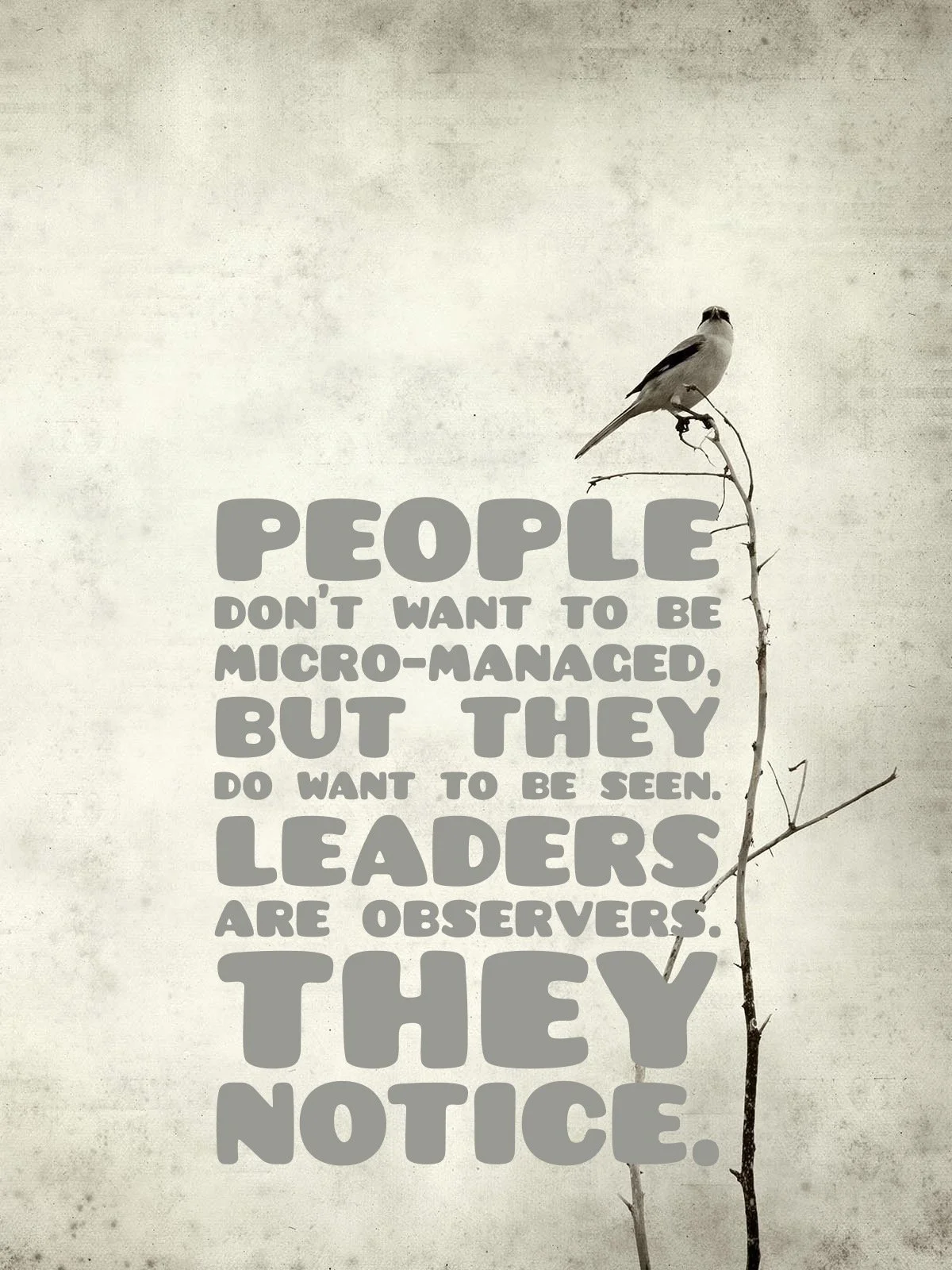Actions of a Leader: 6
INspect.
I’m sure you’ve heard the often repeated advice to “inspect what you expect.” This is good and sound advice. Leadership that veers off into over-delegation is more like abandonment. The result is non-leadership. The faithful leader engages with the mission and his teammates. Again, I’m sure you are familiar with this fact.
Yet, there is more to say on the tone and tenor of inspection. Often, “inspect what you expect” gives way to a demerit system of hovering and criticizing. But inspecting another’s work can also uncover nuggets of gold. It can uncover issues worthy of encouragement and celebration. Human nature often atrophies into the negative aspect of even the best of ideas. Don’t do that. Don’t inspect like a vice principal, poking a crooked and shaming finger at every possible error. (Sorry, vice principals!) That’s not what I mean by “inspect what you expect.”
Instead, inspection begins with simple observation. People don’t want to be micro-managed, but they do want to be seen. Leaders are observers. They notice.
When I was a 22-year-old college graduate on my first job, I was fortunate enough to have an older mentor as my first supervisor. As a recent college student, I would show up for staff meetings grumpy and half asleep. I stayed out late with new friends, enjoying my new single, professional life. There were regular nights out at the dollar movie (yes, back in the early 90s you could still see a movie for a buck.) The catch was that the feature usually began close to midnight. Thus, I often shuffled into work on less than a good night’s sleep. It took me several cups of coffee before anyone wanted to hear me say anything in the staff discussion.
Noticing this behavior, my boss took me into his office one Wednesday. He closed the door and said the simplest sentence that I’ll never forget. “You know we see you, right?” With the kindest act of noticing and the gentlest way of correcting, he helped me learn a lesson. My moods and actions mattered and affected the entire team. My boss was caring for me. He wanted me to succeed in my role and to do so, I was going to have to make some adjustments.
I may never have made the necessary change if my mentor and friend wasn’t dialed in and inspecting. He wasn’t cruel or even confrontational. He leaned in to let me know I was going to have to step it up. I’m very thankful for him inspecting what he was expecting. He believed in me. He showed that he cared enough to notice and remain engaged in my development.
There were other times that his observations resulted in encouragement. He did that too. He was a leader who inspected and you can be that as well. Here are some ideas for gaining and maintaining the leadership action of inspection:
- Be observant. Have you ever noticed that the best comedians are simply better observers? They survey and contemplate something we pass by. You don’t have to write jokes to make a career out of observation. Stay engaged. Take notes. If you’re an executive leader, who is thinking and noticing things about your organization? If it isn’t you - who?
- Be an encourager. Build practices in your team that motivate observation towards encouragement. One team had a monthly practice of filling a Slack channel with encouraging observations about their teammates. They randomized a monthly drawing for a gift card, choosing one giver and one recipient of encouragement. Each month teammates noticed one another. The entire team was learning how to observe, encourage, and inspect.
- Develop your organization's values. Hire to those values. Evaluate with those values in mind. Make sure to regularly embody, teach and remind - and then inspect what you expect.
- Make a regular practice of celebrating. Have some purposeful fun with your team. Make sure to give everyone a chance to celebrate what’s happening in the organization.
- Repeat what you expect often. Hold teammates accountable. From time to time, individuals won’t live up to expectations. No sensible leader revels in terminating staff. But, you can at least know you’re practicing your values. Leaders are often defined by where they draw the red line and say “no.” We build convictions on developed, stated, and inspected values - all healthy things.
If you’ve read the whole series, you have the necessary actions of a leader: INITIATE, INSPIRE, INVOLVE, INSTRUCT, INVEST and INSPECT. Rinse and repeat!
Need more help in this area? Click here for a free consultation.
